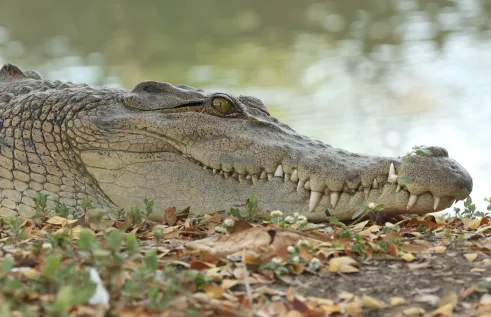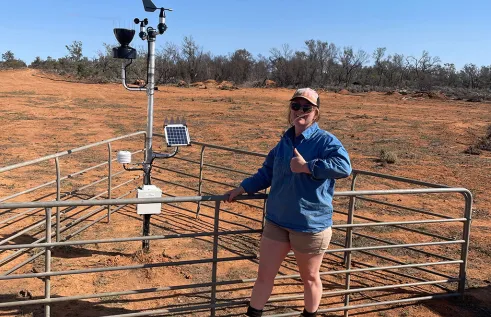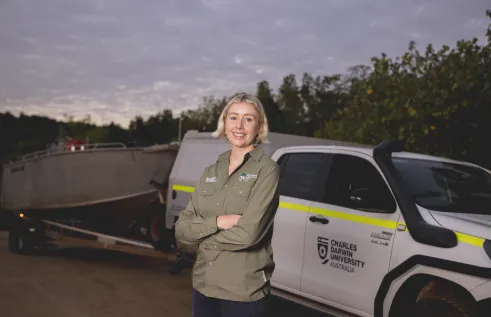Research impact
How can we keep humans and crocodiles safe from each other?

Reports of saltwater crocodile (Crocodylus porosus) attacks on humans have increased dramatically over the past decade, particularly in Indonesia and Malaysia. One Higher Degree by Research student at Charles Darwin University is currently working on reducing the number of attacks without negatively impacting crocodile populations.
Brandon Sideleau had already been keeping track of crocodile attacks covered by the news media when he decided to create a worldwide crocodilian attack database in 2010.
“Over the years the project grew and became more complex, involving contributions from dozens of colleagues, regional government agencies, and more,” he says.
“This has resulted in well over 1,000 reported human deaths and countless retaliation killings or captures of crocodiles, many of which occur in areas where the species is likely still vulnerable.”
Now known as CrocAttack, Brandon’s project has amassed nearly 9,000 attack records, consisting mostly of his own personal research.
Hoping to expand on this, Brandon is pursuing a Higher Degree by Research at Charles Darwin University, placing him in close proximity to the world’s largest extant population of saltwater crocodiles.
Collecting croc data
CrocAttack created the perfect foundation for Brandon’s PhD, providing comprehensive data on attacks across Australia, Brunei, Malaysia and the Philippines.
He is now focusing on areas that are lacking – specifically the island of New Guinea.
As part of his fieldwork, Brandon has been visiting locations in Papua New Guinea and Indonesian Papua, with smaller areas like the Aru Islands and the Kangean Islands to be visited in the future.
“I have been visiting villages and regional health centres collecting attack data, interviewing local residents, and assessing each location for potential contributing factors.”
Brandon notes that human lives will continue to be lost, in turn triggering removal efforts that will impact saltwater crocodile populations, unless region-specific strategies can be developed.
“Hopefully we can identify specific contributing factors and recommend attack mitigation strategies that take into account each region’s unique characteristics, including crocodile and human population densities, habitat availability, quality and type, cultural attributes (such as respecting crocodile totemic beliefs), and projected future changes to these characteristics.”
The future of attack mitigation
Through his research project, Brandon ultimately hopes to help reduce numbers of attacks on humans without negatively impacting crocodile population recovery.
"The goals are to determine the true number of attacks on humans annually, determine attack hotspots, determine attack circumstances, identify factors that are likely contributing to increased number of attacks, and determine and recommend region-specific mitigation strategies."
CDU is seeking Higher Degree by Research students to take part in research projects just like these. Scholarships are available. Learn more.
Related Articles

Following the flock: Samantha’s research could revolutionise water point placement
When Samantha first moved to South Australia's harsh outback, she was confronted by what she saw.
"Having recently moved to arid pastoral South Australia, I was struck by the hot, dry climatic conditions," she says. "I found myself questioning what made these landscapes so resilient, how livestock production could thrive in such conditions and whether this relationship was truly sustainable."
Read more about Following the flock: Samantha’s research could revolutionise water point placement
The NT inspired Kate to become an environmental scientist
A road trip around Australia sparked a huge career change for Kate. The recent Bachelor of Environmental Science graduate switched gears from real estate to environmental science after falling in love with the uniqueness of the Northern Territory.
Read more about The NT inspired Kate to become an environmental scientist
Julia's unexpected road to species-saving research
Julia is researching sharks and rays here in the Top End at Charles Darwin University, a world away from her upbringing in north-western NSW. She's working to ensure some of Australia's most threatened species are around for many generations to come.
Read more about Julia's unexpected road to species-saving research
